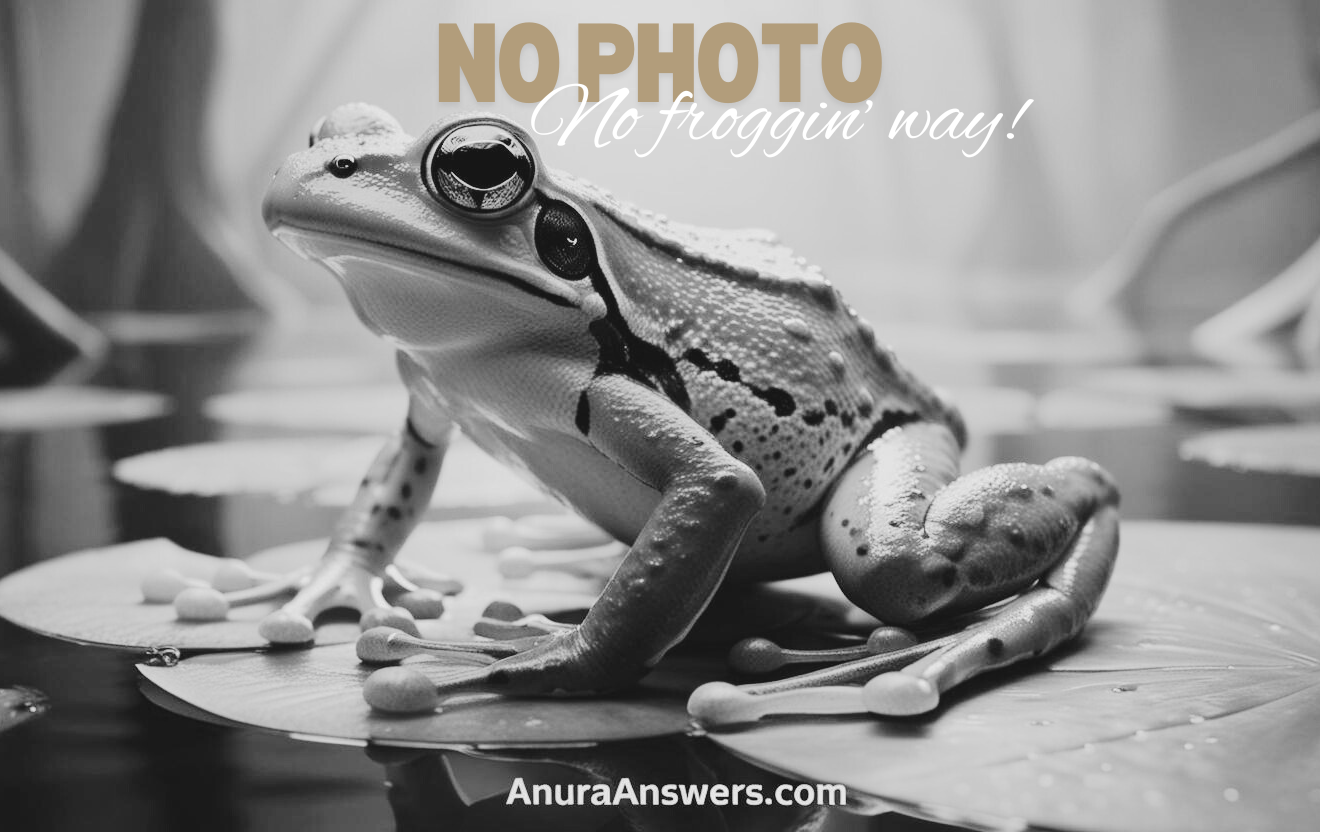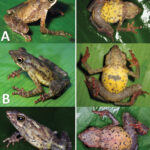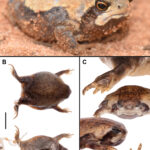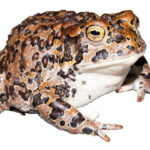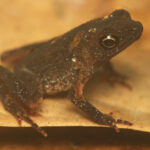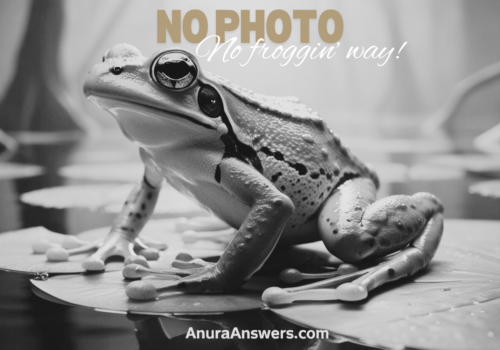Jewels of the Stream: Unveiling the Wonders of Atelopus moropukaqumir#
High in the lush, fog-draped slopes of Peru’s tropical Andean forests, where clouds gently blanket the canopy and delicate mist settles upon emerald leaves, lives a creature whose colorful presence is both astonishing and essential—Atelopus moropukaqumir. Known by its vibrant patterns and resilient existence, this frog species represents not just another beautiful amphibian, but a testament to nature’s vivid artistry and evolutionary brilliance. Despite being relatively obscure to the general populace, this remarkable amphibian has come to embody hope, poignancy, and pressing urgency in the intertwined tales of biodiversity, conservation, and climate change.
While amphibians worldwide are experiencing unparalleled biodiversity declines, Atelopus moropukaqumir offers a captivating window into both the wonders and vulnerabilities of these precious animals. Belonging to the striking genus Atelopus, characterized by vivid colors and fascinating life habits, this unique species is at once symbolic and scientifically vital. Let us journey through the Peruvian highlands, traversing humid valleys and moss-cloaked streambeds, to discover what makes Atelopus moropukaqumir an amphibian worthy of attention and conservation.
Taxonomy and Classification#
First described scientifically in recent decades, the genus Atelopus belongs to the amphibian family Bufonidae, commonly referred to as toads. Despite this familial relation, members of the Atelopus genus are extraordinarily distinct. Unlike many dull-colored cousins, Atelopus moropukaqumir adorned itself through evolution with jewel-like hues and intricate patterns demonstrating remarkable biodiversity within their taxonomic line.
The genus Atelopus contains several critically threatened species scattered throughout Central and South American tropical forests, yet each species represents profound evolutionary distinctions. Categorized into the genus Atelopus, these amphibians often bear a common name as harlequin toads or harlequin frogs due to their candy-like coloration. Atelopus moropukaqumir, however, remains more elusive, its scientific classification constantly refined as biologists learn more about its genetics, behavior, and distribution.
Natural Habitat#
Found exclusively within a narrow transition zone in the Peruvian Andes, Atelopus moropukaqumir makes its home almost exclusively near swiftly flowing mountain streams and rivulets. Observing them in their natural habitat requires traveling to remote highland valleys at elevations usually ranging between 1000 to 2000 meters above sea level. Here, amidst towering and mist-laden trees, one encounters the microhabitats tailored precisely to the species’ specific needs.
Doused in perpetual moisture and cloaked in verdant moss, these damp mountain streams offer optimal conditions. The high humidity, paired with persistently cool temperatures, creates an ideal environment for their sensitive skin respiration mechanisms. Moreover, these conditions support rich biodiversity of insects and invertebrate prey, providing abundant nourishment for the amphibians, strengthening the interconnected relationships within this delicate habitat.
Ecosystem scholars admire these habitats not merely for their beauty but also for their fragility. Any change, be it through human deforestation, climate disruption, or pollution of waterways, can irreversibly impact these unique living places and threaten populations of harlequin frogs like Atelopus moropukaqumir.
Physical Characteristics#
At first glance, Atelopus moropukaqumir enchants observers with its jewel-like skin pigmentation, making it one of the most beautiful amphibians known in its region. Typical adults range slightly between 3 to 4 centimeters long, a small size that belies its significance in the ecosystem. Their bodies are elegant and streamlined, perfectly adapted for life along fast-flowing mountain streams.
Yet it is their coloration that commands immediate awe: brilliant yellows, oranges, or fiery reds splashed against a deep black or vibrant green background. Such striking hues do more than dazzle the eye—they convey critical survival messages, warning potential predators of toxins secreted through the frog’s skin.
This coloration, known as aposematic coloration, serves a dual purpose. Predators, quickly associating bold colors with potentially harmful chemicals, steer clear—an intelligent evolutionary trick ensuring survival. Additionally, their slender limbs, equipped with slightly webbed toes, offer unparalleled agility along slippery surfaces, allowing effortless navigation across moss-covered stones and submerged logs. Each physical trait is not simply aesthetic; instead, they are perfectly evolved adaptations to their specialized habitat and lifestyle.
Behavior and Life Cycle#
The life of Atelopus moropukaqumir unfolds intimately tied to its aqueous environment. Adults display diurnal activity patterns, often spotted boldly perched on rocks and fallen branches along their breeding streams. Unlike many nocturnal amphibians that remain hidden during daylight hours, these frogs comfortably bask visibly at daytime, thanks to their potent chemical defenses that offer necessary protection.
Feeding primarily on small insects and arthropods, these frogs employ quick ambush tactics, launching with lightning-fast accuracy to snatch prey. Observing Atelopus moropukaqumir feeding provides a micro-insight into the dynamic balance of predator-prey interactions within the rainforest ecosystem, showcasing how such elegant frogs profoundly influence their habitats by regulating insect populations.
Breeding Rituals and Reproduction#
Each breeding season brings with it a quiet yet fascinating spectacle along mountain streams. Male frogs, often claiming particular sites along riverbanks or shallow ripples, signal their presence with gentle yet persistent vocalizations. These calls, standing out gently against the backdrop of rustling leaves and trickling water, act as invitations to female counterparts.
Once paired, females deposit strings of delicate gel-wrapped eggs underwater attached to submerged vegetation or solid stone surfaces. Eventually, the eggs hatch into tiny tadpoles, displaying remarkable resilience to the ecological challenges posed by mountain stream currents and predation. These tadpoles venture forth into free-floating lives until reaching metamorphosis into juvenile frogs, readying them to navigate increasingly complex interactions within their adult lives.
Ecological Role#
Beyond their charisma and aesthetic wonder, Atelopus moropukaqumir occupies a crucial ecological niche. As insectivores, these frogs balance local insect populations, thus contributing significantly toward maintaining the equilibrium of the ecosystem in which they dwell. Furthermore, they themselves serve as prey for diverse predators, ranging from birds and snakes to larger mammals, highlighting their integrative significance within the Andean food web.
Importantly, their presence—or absence—also functions as a critical indicator for ecological health, especially water quality and habitat stability. Because amphibian skin readily absorbs toxins from their surroundings, healthy populations of Atelopus moropukaqumir serve as vital signals of intact ecosystems. Conversely, sudden declines indicate potential environmental threats, alerting biologists and conservationists toward urgent investigation and action.
Threats and Conservation Status#
Tragically, like many amphibians worldwide, the stunning beauty of Atelopus moropukaqumir comes coupled with vulnerability. Primary threats to their continued existence include habitat destruction, primarily through deforestation and urban expansion, as well as global climate change. Increased temperatures and irregular precipitation patterns trigger devastating effects, disrupting essential life cycles and creating favorable conditions for diseases such as chytridiomycosis—a fungal infection that has decimated countless amphibian populations across the globe.
At present, the International Union for the Conservation of Nature (IUCN) lists various members of Atelopus as critically endangered, prompting focused conservation assessments. Specific conservation programs within Peru focus on habitat protection, establishing reserves, and supporting captive breeding initiatives; yet increased awareness and sustained funding remains paramount.
Cultural and Scientific Significance#
Besides their scientific fascination and ecological importance, these frogs resonate culturally with indigenous communities inhabiting this region. Locally, the brilliant coloration and mystery surrounding these elusive animals often capture imaginations, generating legends and inspiring folkloric tales.
Conclusion#
Amid rapidly transforming landscapes, the tale of Atelopus moropukaqumir stands as both warning and promise. To safeguard this jewel of Peru’s mountains is to protect the intricate tapestry of life that sustains our shared ecological heritage. Let us heed its gentle call, embracing our responsibility to steward the natural wonders we share.
